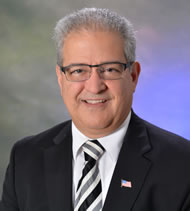This article addresses the security and legal issues relative to the Seattle video depicting the beating of a girl while security personnel stood around. In February 2010, a video in a Seattle train station showed three security personnel standing around while the girl is beaten and kicked. A fire storm of criticism rained on the security officers, the security firm and its governmental client. Of course, people are upset about the failure of these security officers to intervene. This occurred for two basic reasons:
- Fear
- Money
This case illustrates the "circular logic" often found in contemporary America. People are afraid to take mass transit, so they desire protection. Seattle does not have enough money to hire more police. Because of fiscal constraints, they cannot have police stand post in the transit system. Due to fear of crime, however, Seattle must have security in its system. Providing "security" instead of police will save money. However, because Seattle is concerned about liability exposure, it specifically restricts the functions of these security officers to observe and report. A fight breaks out. Due to this restriction, the security officers do not intervene. Instead, they simply call the police. Since the police are short staffed, their response to the scene is too slow. In the end, it is a vicious circle: Fear requires security, but money precludes the type of security needed to actually do something about crime. Thus, the people are given "security" that cannot help them.
What we need is to address this vicious circle is "real security." This entails personnel who are appropriately selected, trained and prepared to engage when circumstances warrant. Of course, this requires money to select and train, and higher salaries to retain good, qualified personnel. Even with these standards, the more security personnel physically engage suspects, the more likely lawsuits will result--due to allegations of "excessive force." You get the picture...It is a vicious circle!
There are two basic ways to provide security provisions. They are "observe and report," and physical intervention. Each of these alternatives manifest pros and cons. These are briefly outlined below.
Observe & Report:
PRO: Limited work product for the security personnel. With less work, there is little chance of being involved in liability for security failures. The limited work product results in lower expectations. The expecations are simply to be there (observe), and report crime to police.
CON: Bad public relations-as evidenced by the Seattle incident. In addition, the failure to physically intervene in emergency situations creates possible liability for failure to act. In cases like Seattle, the question is whether the 3rd party reasonably relied on "security" to protect her. Based on the facts, where the victim was standing by and actually hiding around the security personnel, it is clear that the victim believed security was there to protect her. This creates potential liability to the security firm or the transportation system (municipal entity). The key questions with commentary are outlined below:
- Does the contract/post orders/policies specifically limit work product to "observe and report"? Based on media reports, it appears that these security officers were specifically limited to the "observe and report" function.
- Does the contract/post orders/policies specifically preclude (even forbid) the physical engagement of any officer? While it is unknown from media accounts, the statement posted by the security firm appears to demonstrate they believed it could not "legally" engage in physical intervention. This is false. Security personnel, like private citizens, can "arrest" for crimes committed in their presence. The appropriate Washington legal standards are set out below:
"The same authority exists for a private person to make an arrest as an officer for misdemeanor committed in his presence, under the common law. In this state, it has been held that the right of an officer to make an arrest without a warrant exists even though the misdemeanor committed in his presence was not a breach of the peace. (State v. Deitz, 136 Wash. 228.) Also, see State v. Olsen, 43 Wn. (2d) 726. A private person, if the arrest by him be lawful, is accorded the same right and privileges as officers in accomplishing this purpose." Smith v. Drew, 175 Wash. 11. (http://www.atg.wa.gov/AGOOpinions/Opinion.aspx?section=archive&id=10234 retrieved on February 15, 2010)
Despite these legal standards, the security firm released a statement, in pertinent part, provided that:
"The deterrent action, beyond reporting and requesting help, that can be legally taken by guards in this situation is limited." (Olympic Security statement retrieved from http://www.komonews.com/news/content/84063732.html on February 15, 2010)
This statement seems to suggest that the security personnel could not legally intervene. As mentioned above, this is an incorrect legal conclusion. Private security, like private citizens, has the legal capacity to affect an arrest. The more likely conclusion is that the security firm and its client sought to preclude physical intervention because they sought to minimize its liability exposure. In this case, they "bought" liability, by being too fearful of such exposure.
- Does the contract contain Indemnification/Hold Harmless provision placing liability exposure onto one of the parties? While it is unknown what the actual contract language states, these are standard provisions in the security industry. Typically, the client will seek to place the burden of indemnification and hold harmless on to the security firm. More often than not, security firms accept these provisions as a cost of doing business. Indeed, they simply shift the liability toward their insurance carrier.
- Does the contract preclude 3rd party claims? While it is unknown what the actual contract language states, this also a standard provision in the security industry. Typically, both parties seek to limit any liability to only those who are a "party to the contract." Hence, they seek to preclude liability for any 3rd parties-those who are not signatories of the agreement. However, seeking to preclude liability for those injured or killed due to security failures is a restriction courts are often not prepared to craft. Consequently, courts will allow 3rd parties to sue relative to the terms and conditions of a security contract if reasonable reliance for the security services can be shown.
- Did any 3rd party reasonably rely on the services? In this case, it is clear that the 3rd party victim indeed sought to rely on the security services. She stood next to the security officers. She even seemed to be hiding behind the security personnel as her attacker approached her. By almost any standard, the video appears to demonstrate that the victim relied and expected the security personnel would prevent the attack. Of course, the attack was not prevented.
Physical Intervention:
The other "alternative" is to allow, or even facilitate, physical intervention by security personnel. As with the more limited alternative, observe and report, this has both pros and cons.
PRO: Because this alternative involves more judgment and potentially complicated work product, there is a greater chance of being involved in liability for "excessive force" or false arrest claims. These causes of action usually occur when the security personnel are afforded discretion to make judgments under the particular set of circumstances. Such judgments, however, often involve decision making under stressful, even dangerous, situations. As one can appreciate, this can be challenging, even when personnel are highly competent and highly trained. In the end, the expectation is to actually "prevent" crime or intercede when appropriate. When this is done correctly, security personnel become the "heroes."
CON: If the security personnel make bad judgments, such as applying excessive force or arresting the wrong person, the security firm will be liable for these damages. In the end, the key is to balance these often opposing principles. The greater expectations placed on security personnel, the more competent (and trained) they need to be. Doing this appropriately, however, increases the costs of the security provision. The cost of security is higher for these reasons: Higher salaries and better the training cost money. Higher costs for these factors equates to more costs to provide "security." Second, if security methodologies allow, or foster, physical intervention, the more likely liability exposure will result. Plainly stated, the more often security officers engage in physical interventions, such as arrests, the more probable lawsuits will result. This is not a linear, causal relationship, but it is based simply on probabilities. The more you engage, the more likely someone will resist and subsequently complain in the form of a lawsuit.
In the end, these alternatives are a "double edged" sword. On one hand, you can take the "hands off" approach. This seeks to negate liability based on physical misconduct or improper judgment. In this approach, however, you can be blamed for failing to act when the crime victim reasonably relied on your intervention. The other approach is to physically engage when necessary. This approach, however, also is not "bullet proof." This may also result in liability if, or when, lawsuits for excessive force and false arrest are asserted.
As one can discern, neither approach is a perfect solution. The "right" answer is to blend both approaches. Use the "observe and report" function on most occasions. When this does not work, or when emergencies occur, the security personnel must have the capacity and the ability to appropriately respond. It can be challenging to blend these two approaches. While this is difficult to achieve, both security best practices and liability reduction will be manifested if you accomplish this delicate balance!











